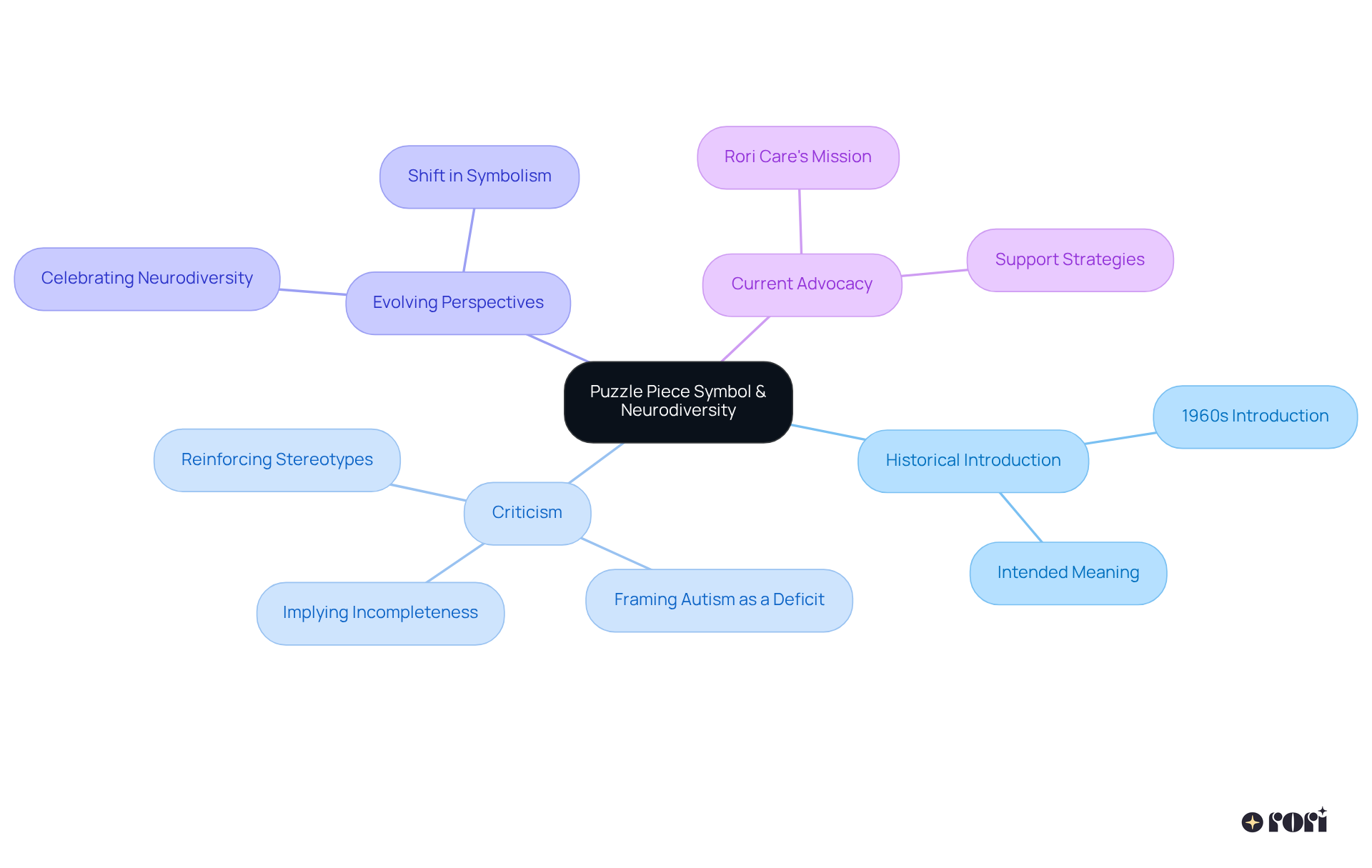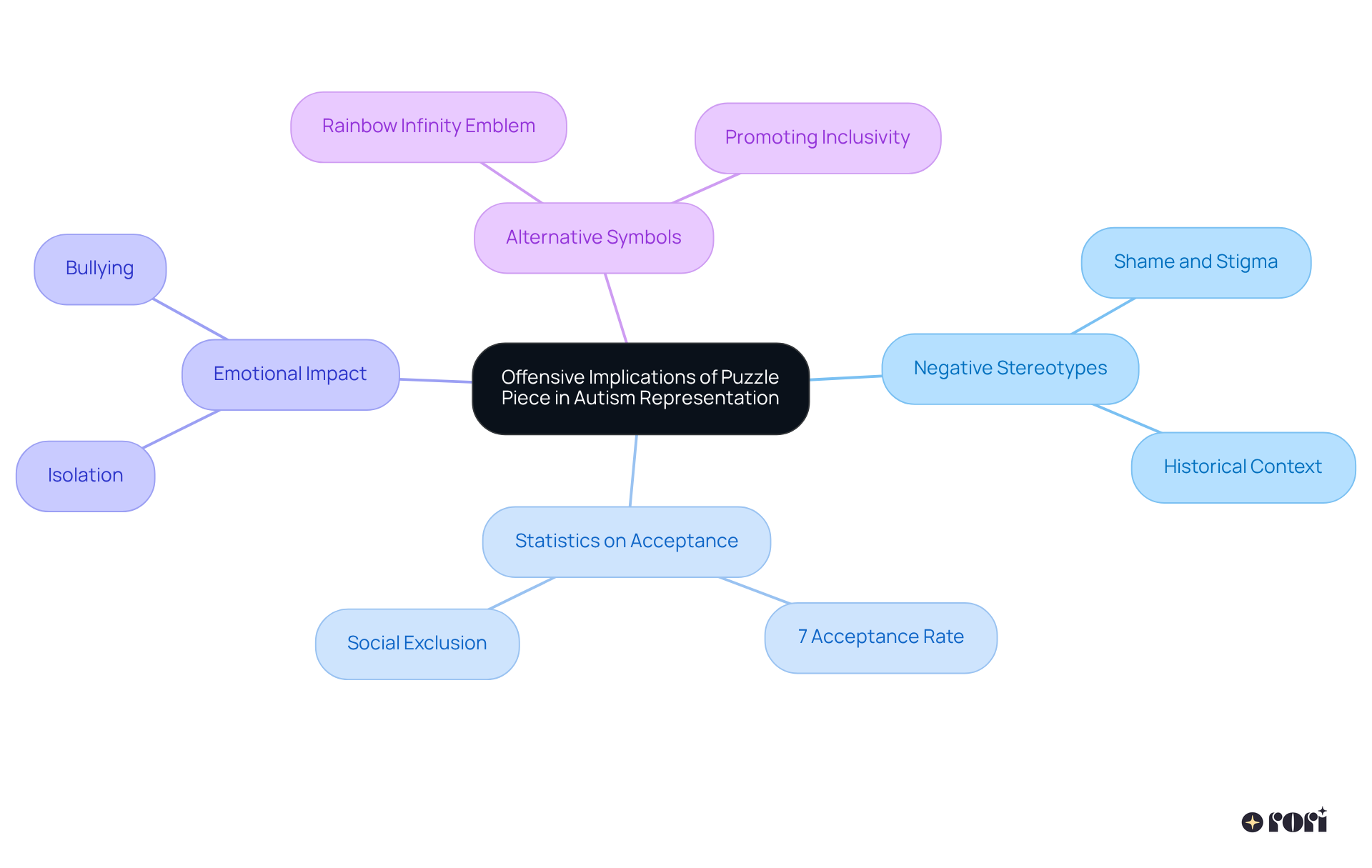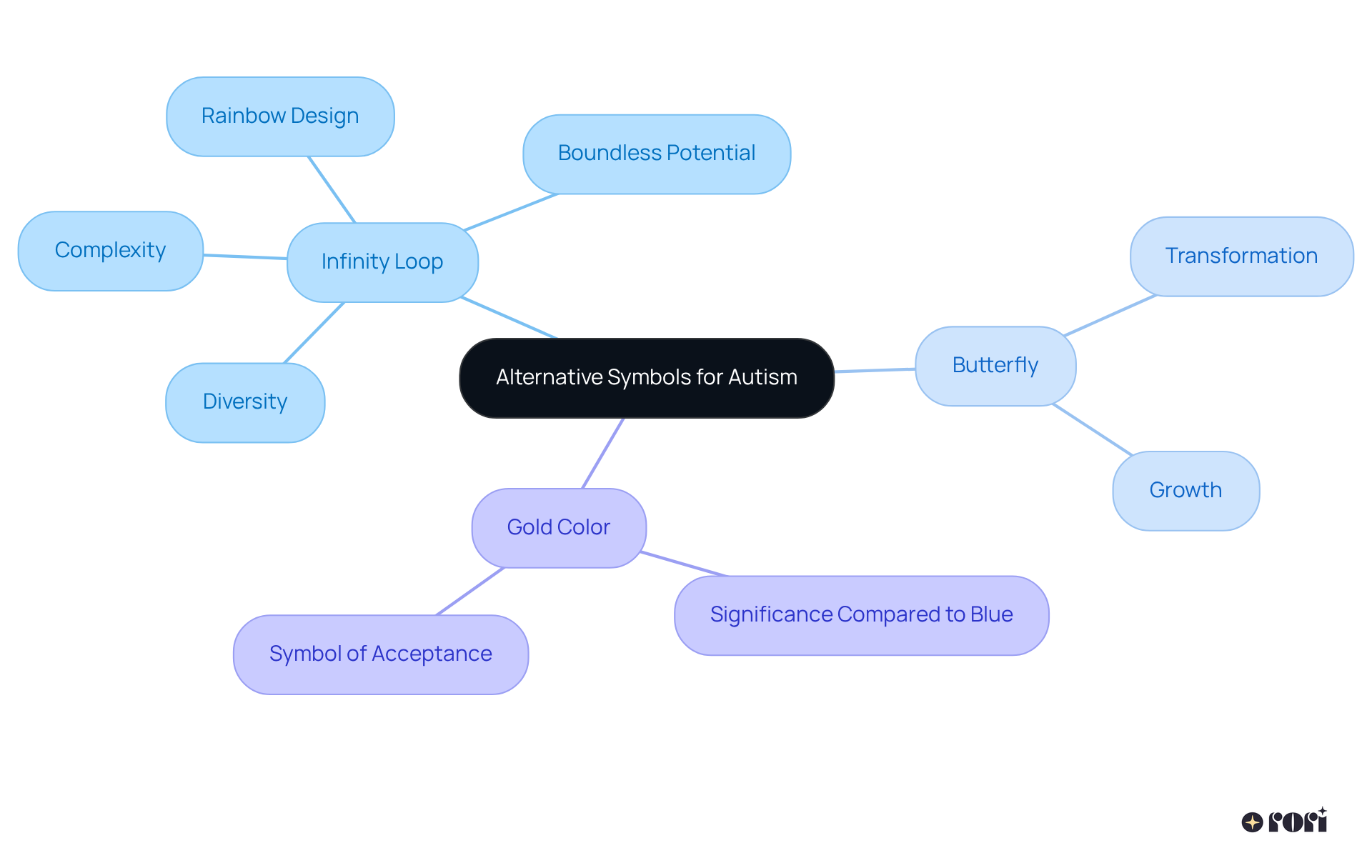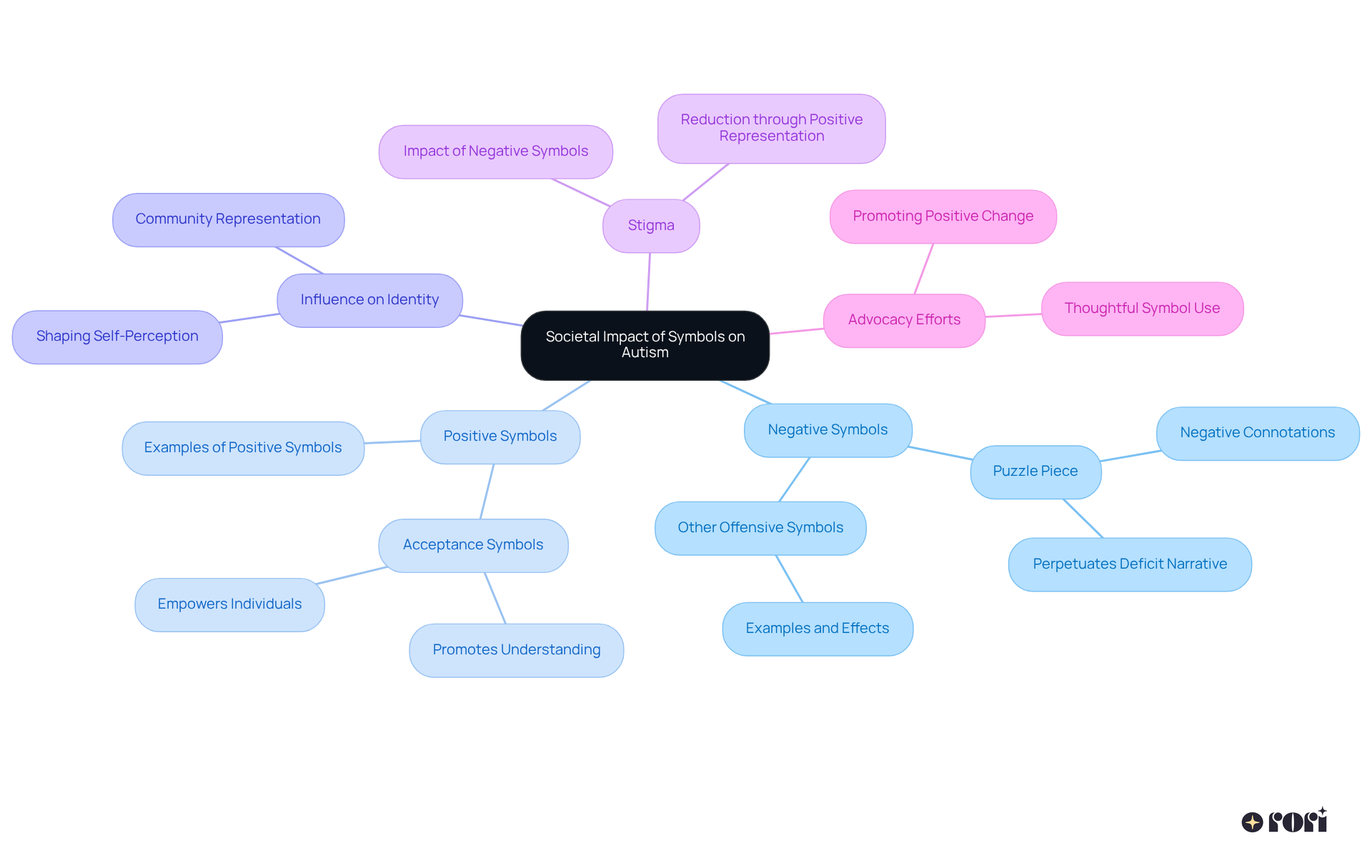The puzzle piece symbol for autism can be seen as offensive. Why? It suggests that individuals on the autism spectrum are incomplete or broken, which only reinforces harmful stereotypes. This representation has been linked to organizations that focus on 'curing' autism, overshadowing the strengths and unique experiences of autistic individuals. It’s important to recognize how this contributes to societal stigma and exclusion. Let’s explore this together and understand the impact it has!
The puzzle piece has long been a symbol of autism awareness, but its story is filled with controversy and changing views. Originally, it aimed to capture the complexity of autism. However, many have criticized it for suggesting that individuals on the spectrum are incomplete or broken. As our understanding of neurodiversity grows, we must ask ourselves: how can symbols empower us or, conversely, reinforce stigma within the autism community?
Let’s explore this together! This article dives into the implications of the puzzle piece symbol, looking at its historical significance, the negative perceptions it can evoke, and the emergence of alternative symbols that celebrate the richness of autistic identities. We’re here to help you every step of the way!
The puzzle fragment icon has been linked with neurodiversity awareness since the National Autistic Society introduced it in the 1960s. It was originally crafted to show the complexity of autism, suggesting that individuals with the condition are like puzzle pieces that need to connect. However, over the years, this representation has faced significant criticism because it is a puzzle piece for autism offensive, implying that people on the autism spectrum are incomplete or broken. While it aimed to , the narrative it unintentionally promoted, which framed autism as a deficit rather than a valid variation of human experience, is a puzzle piece for autism offensive.
As our understanding has evolved, so has the conversation around the puzzle representation. There’s a growing emphasis on celebrating neurodiversity and inclusivity in how we depict these experiences. Today, discussions are shifting toward representations that honor the diverse journeys of individuals on the spectrum, moving away from outdated ideas tied to the puzzle. This change resonates with Rori Care's mission to promote neurodiversity and offer tailored support strategies for children with developmental differences. By empowering families, we help them navigate the care journey with confidence, fostering child development through expertise and compassion.
Let’s explore this together and embrace the beautiful tapestry of neurodiversity!

The backlash faced by the puzzle piece design highlights that it is a puzzle piece for autism offensive, as it reinforces harmful stereotypes about individuals on the autism spectrum. Many supporters feel that the idea that people on the spectrum are lacking or need fixing is a puzzle piece for autism offensive, as it can lead to feelings of shame and stigma. This view is particularly troubling because it overshadows the of those on the spectrum.
Launched back in 1963 by the National Autistic Society, this emblem, which is a puzzle piece for autism offensive, has ties to organizations that focused on 'curing' autism rather than embracing neurodiversity, adding to its hurtful nature. Did you know that only 7% of autistic adults feel accepted in society? This statistic really highlights the gap between how autistic individuals are represented and their actual experiences.
Moreover, negative attitudes toward autistic people can lead to discrimination and social exclusion. Many autistic individuals experience higher levels of bullying, with reports showing they have 18-20 fewer friendships during adolescence compared to peers with different special educational needs. The emotional burden of the puzzle piece representation, which is a puzzle piece for autism offensive, can isolate those it aims to support, creating a rift within the neurodiversity community.
As we see alternative symbols like the rainbow infinity emblem gaining popularity, they focus on acceptance and the endless possibilities for autistic individuals. This shift promotes a more inclusive narrative that truly celebrates neurodiversity. Let’s explore this together and consider how we can foster a more supportive environment!

In recent years, we've seen some really inspiring alternative representations that aim to show autism in a more positive light. Take the infinity loop, for example—it beautifully symbolizes the diversity and complexity of the spectrum, highlighting the wide range of experiences and abilities it includes. Many in the neurodiversity movement have embraced the rainbow-colored infinity design, which represents acceptance and the celebration of our differences. As autism supporter Sarah Johnson points out, this infinity figure represents the boundless potential of those on the spectrum.
Additionally, the butterfly has become a lovely symbol for transformation and growth, reflecting how those with developmental differences can truly flourish. And let’s not forget the growing recognition of gold as a symbolic color for autistic individuals, which contrasts with the traditional blue. This shift signifies a more positive representation of autism, which is so important!
These alternative symbols not only challenge the notion that the puzzle piece is a puzzle piece for autism offensive, but also encourage a more inclusive and affirming narrative. It’s significant to note that campaigns using the infinity design have led to a 65% rise in community awareness, showing just how effective they are in fostering understanding and acceptance.
The infinity sign first appeared in 2005 and has played a crucial role in changing perceptions about autism, especially through initiatives like the 'Infinity of Acceptance' campaign. However, it’s important to recognize that challenges remain, as some communities still prefer other symbols. This highlights the about how we represent the condition. Let’s explore this together and continue to foster a supportive dialogue!

Symbols really shape how society views autism and influence the identities of those on the spectrum. For instance, the belief that the puzzle piece is a puzzle piece for autism offensive often carries negative connotations, which can lead to a narrative that sees autism through a lens of deficit and stigma. On the other hand, symbols that promote acceptance and understanding can help nurture a more positive identity for individuals on the autism spectrum. This shift in representation is so important for and fostering inclusivity. As we become more aware of how crucial representation is, we recognize that the symbols we choose can either empower those with autism or, in some cases, is a puzzle piece for autism offensive, perpetuating harmful stereotypes. This highlights the need for thoughtful consideration in our advocacy efforts. Let’s explore this together!

The puzzle piece symbol, once meant to capture the complexity of autism, has transformed into a controversial emblem that many now find offensive. This change in perception underscores how symbols can shape our societal attitudes and individual identities within the autism community. Some argue that the puzzle piece suggests incompleteness or a need for fixing, which detracts from celebrating neurodiversity and the unique strengths of those on the spectrum.
As we dive deeper into this discussion, we uncover key insights about the historical significance of the puzzle piece, the harmful implications it carries, and the emergence of alternative symbols that promote acceptance and inclusivity. The shift from the puzzle piece to symbols like the infinity loop reflects a broader movement towards embracing neurodiversity. These new representations celebrate the diverse experiences and potential of individuals on the autism spectrum.
As our society evolves, it's essential to foster a dialogue that values understanding and acceptance over outdated stereotypes. Embracing inclusive symbols not only empowers those within the autism community but also nurtures a more compassionate and informed public perception. Advocating for these positive representations can help dismantle stigma and promote a narrative that honors the richness of neurodiversity. Let’s encourage everyone to join in this important conversation! Together, we can create a space where everyone feels understood and valued.
What is the historical significance of the puzzle piece symbol?
The puzzle piece symbol has been linked to neurodiversity awareness since the National Autistic Society introduced it in the 1960s, originally representing the complexity of autism and suggesting that individuals with autism are like puzzle pieces that need to connect.
Why has the puzzle piece symbol faced criticism?
The puzzle piece symbol has faced criticism for being offensive as it implies that people on the autism spectrum are incomplete or broken, framing autism as a deficit rather than a valid variation of human experience.
How has the conversation around the puzzle piece symbol changed over time?
The conversation has shifted towards celebrating neurodiversity and inclusivity, focusing on representations that honor the diverse journeys of individuals on the autism spectrum, moving away from outdated ideas associated with the puzzle piece.
What is Rori Care's mission regarding neurodiversity?
Rori Care's mission is to promote neurodiversity and provide tailored support strategies for children with developmental differences, empowering families to navigate their care journey with confidence and fostering child development through expertise and compassion.
What is the current perspective on representing autism and neurodiversity?
The current perspective emphasizes honoring the diverse experiences of individuals on the autism spectrum and moving towards inclusive representations that celebrate neurodiversity rather than framing it negatively.